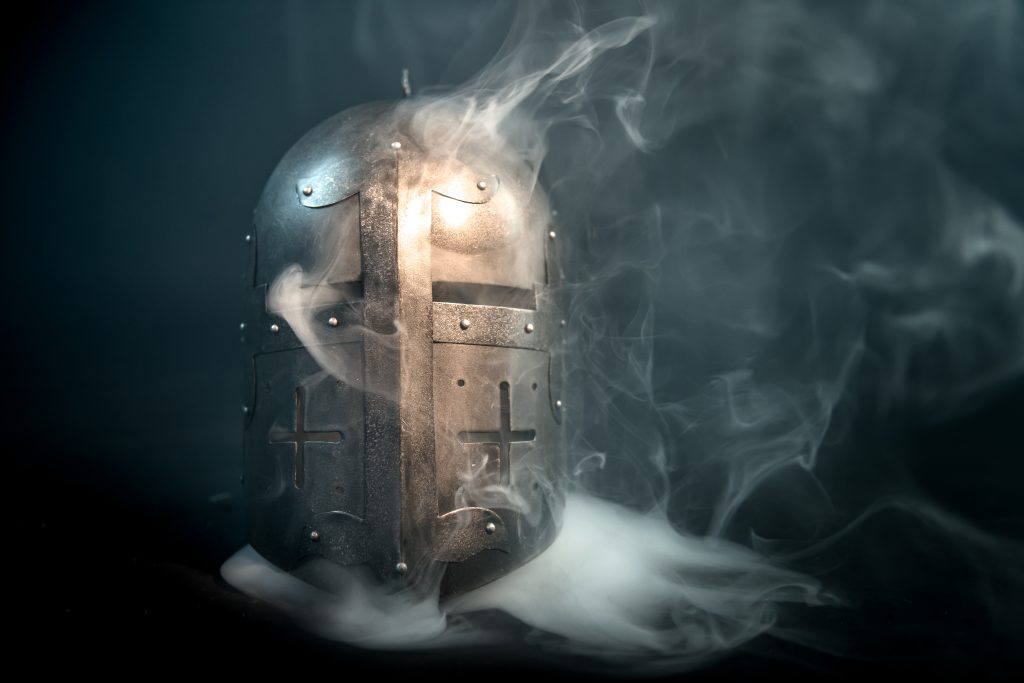
"So all day long the noise of battle rolled
Among the mountains by the winter sea;
Until King Arthur’s Table, man by man,
Had fallen in Lyonnesse about their lord,
King Arthur. Then, because his wound was deep,
The bold Sir Bedivere uplifted him,
And bore him to a chapel nigh the field,
A broken chancel with a broken cross,
That stood on a dark strait of barren land:
On one side lay the Ocean, and on one
Lay a great water, and the moon was full."
From Idylls of the King-The Passing of Arthur- ALFRED, LORD TENNYSON
There are many historical written works and legendary tales of the lost land of Lyonesse. Here are some of those tales and a short history of the Seven Stones Reef. Legend tells that the Sevenstones is the location of Lyonesse (Lethowsow). A place of chivalrous deeds and enormous loss.

“On the third of the Nones (5th) of November (1099) the sea overflowed the shore, destroying towns and drowning many persons and innumerable oxen and sheep.”–The Chronicle of Florence of Worcester, translated by Thomas Forester, A.M. Bohn, 1854.
The mythical land of Lyonesse lay between Land’s End and the Scilly Isles. Lethowsow, as it was known in Cornwall, was a fertile land and its people prosperous. There were many villages and 140 churches. Legend states that buildings can be seen in the sea on calm days and that the sound of distant church bells carry across the sea. Richard Carew, in his “Survey of Cornwall”(1602), writes:
“The space between the Land’s End and the Isles of Scilly, being about thirty miles, to this day retaineth the name, in Cornish Lethowsow, and carrieth continually an equal depth of forty or sixty fathom (a thing not unusual in the sea’s proper dominion) save that about the midway there leith a rock which at low water discovereth his head. They term it the Gulfe, suiting thereby the other name of Scilla.”

Carew also reports that fishermen casting their hooks in this location have drawn up pieces of doors and windows.
Lethowsow derives from the Cornish name for the Seven Stones reef, on the reputed site of the lost land’s capital. The name means ‘the milky ones’, from the constant white water surrounding the reef.
” William of Worcester, an author of our own country, thirteen centuries after Solinus (Latin grammarian and compiler, who probably lived in the early 3rd century AD), states, with a degree of positive exactness, stamping authenticity upon its recital, that between Mount’s Bay and the Scilly Islands there had been woods, and meadows, and arable lands, and a hundred and forty parish churches, which before his time were submerged by the ocean.” — A Tour through Cornwall in the Autumn of 1808, by the Rev. Richard Warner.
An excerpt from the captivating ‘King Arthur and Knights of the Round Table’ site https://bit.ly/2UoSpiA “The sixteenth-century antiquarian, William Camden, collected a number of stories from the local people, and recalls that they referred to the Seven Stones reef off Land’s End as the City of Lions (Lyonesse). They also claimed to be able to hear the bells of the drowned city ringing out during rough seas, a story which is still current today. Certainly, if one takes a boat out on a calm day it is possible to catch a glimpse of walls beneath the water, and what are clearly the remains of field boundaries show up at low tide along the sands of the Sampson Flats between the isles of Tresco and Sampson.”

S.S.TORREY CANYON ran aground on Pollard Rock on the Seven Stones Reef, near Lands End, Cornwall on 18th March 1967.
SEVEN STONES LIGHTSHIP
Also known as a lightvessel, is moored off the Seven Stones Reef which is nearly 15 miles (24 km) to the west-north-west (WNW) of Land’s End, Cornwall, and 7 miles (11 km) east-north-east (ENE) of the Isles of Scilly. The government was first petitioned for a light on the reef in 1826 (with no success), and a second petition in 1839 was supported by the British Channel ports, Liverpool merchants and the Chamber of Commerce of Waterford. A meeting held on 21 February 1840 in Falmouth declared the reef would shorten the route around the Isles of Scilly by up to 36 hours.
The rocks are only exposed at half tide and it was not feasible to build a lighthouse so a lightvessel was provided by Trinity House. The first was moored near the reef on 20 August 1841 and exhibited its first light on 1 September 1841. She is permanently anchored in 40 fathoms (73 m) and is 2.5 miles (4.0 km) north-east (NE) of the reef. Since 1987, the Seven Stones Lightship has been automated and unmanned.

The reef has been a navigational hazard to shipping for centuries with seventy-one named wrecks and an estimated two hundred shipwrecks overall, the most infamous being the oil tanker Torrey Canyon on 18 March 1967.
Please leave a comment. I would especially love to hear of any local myths or legends in your part of the world! Have a Great Week!





One Response to The Seven Stones Reef and the Lost Land of Lyonesse